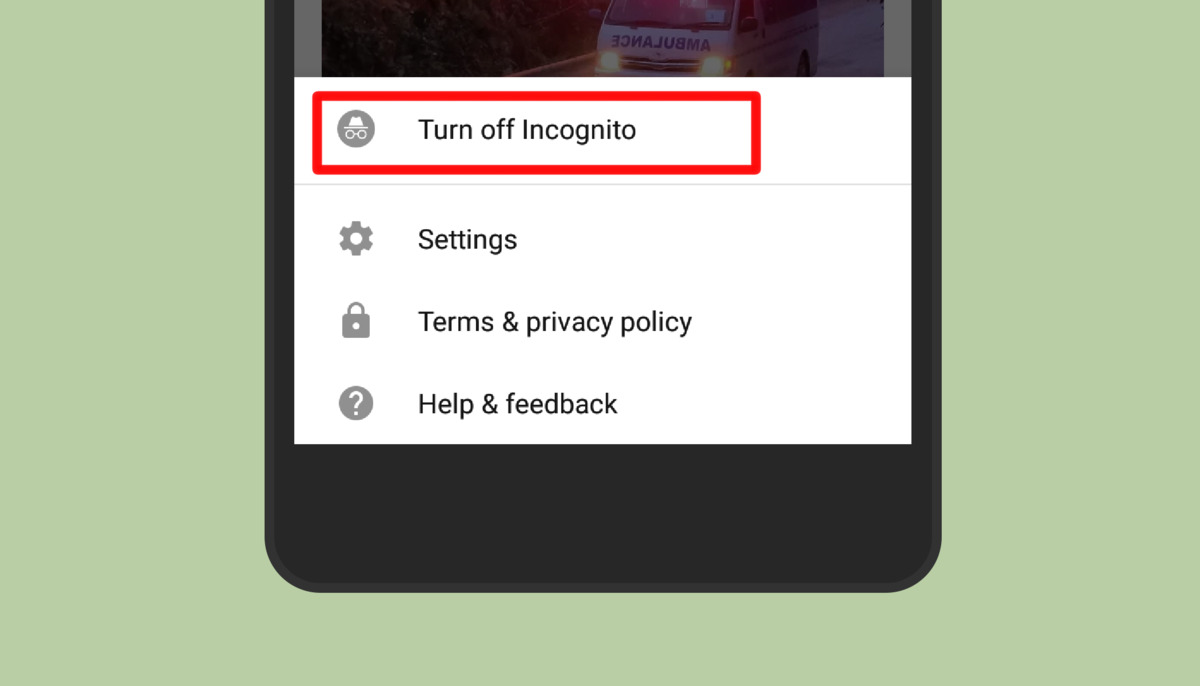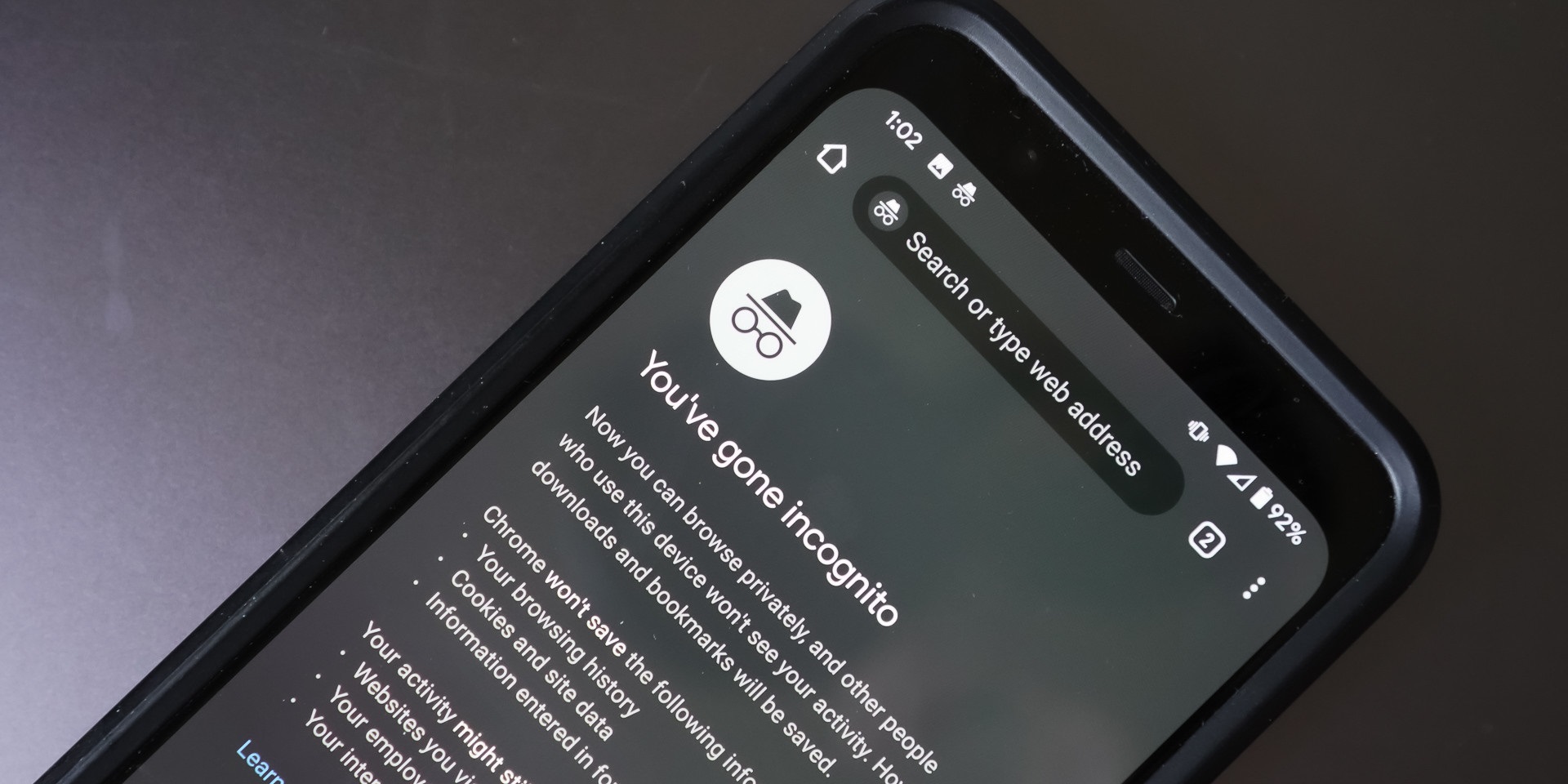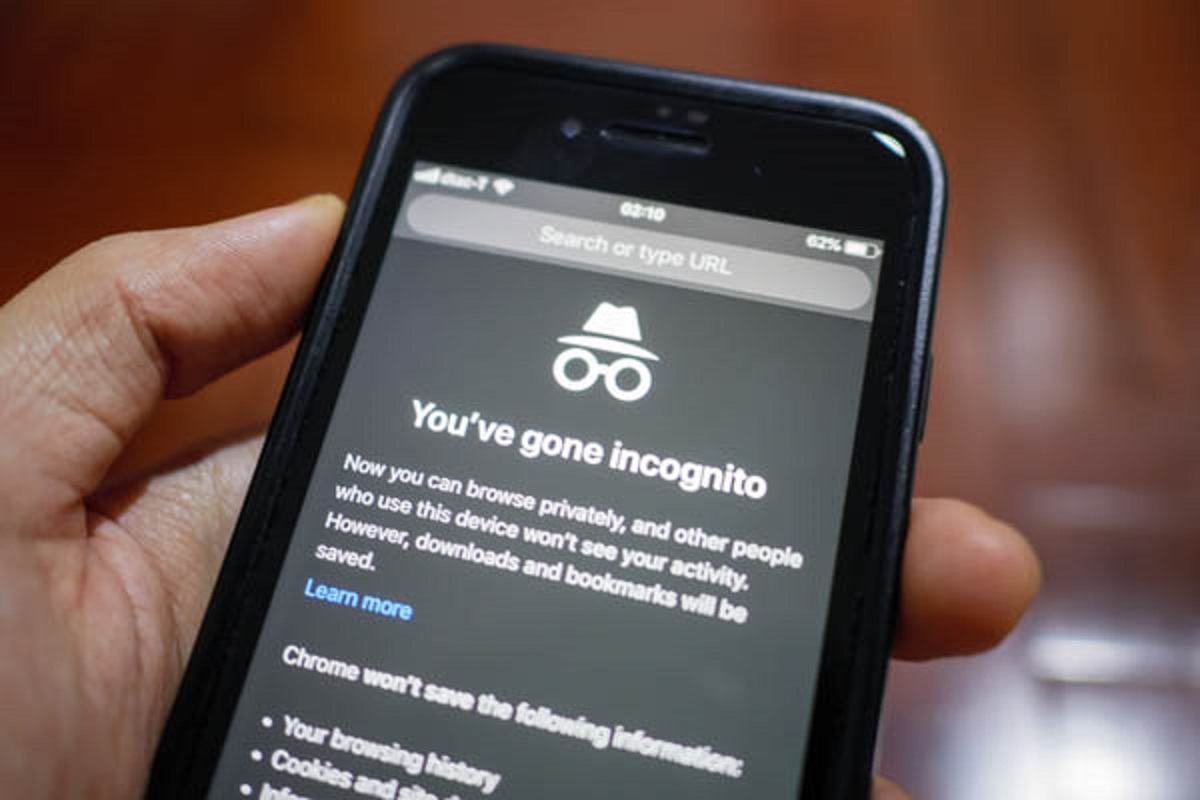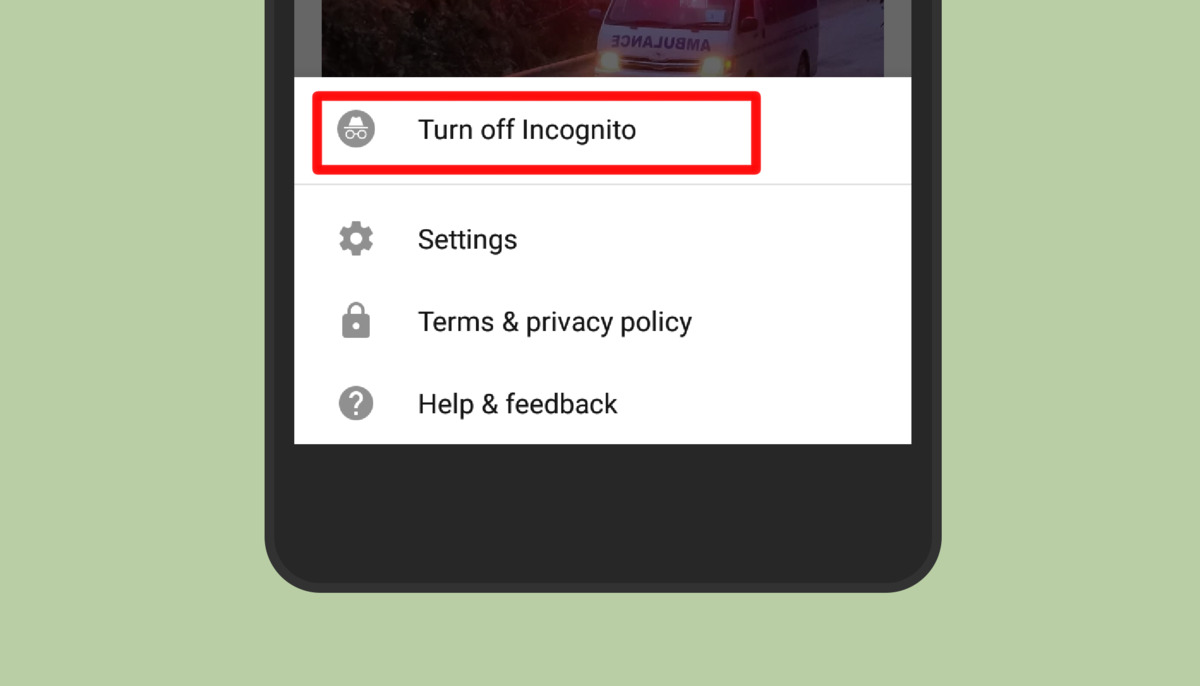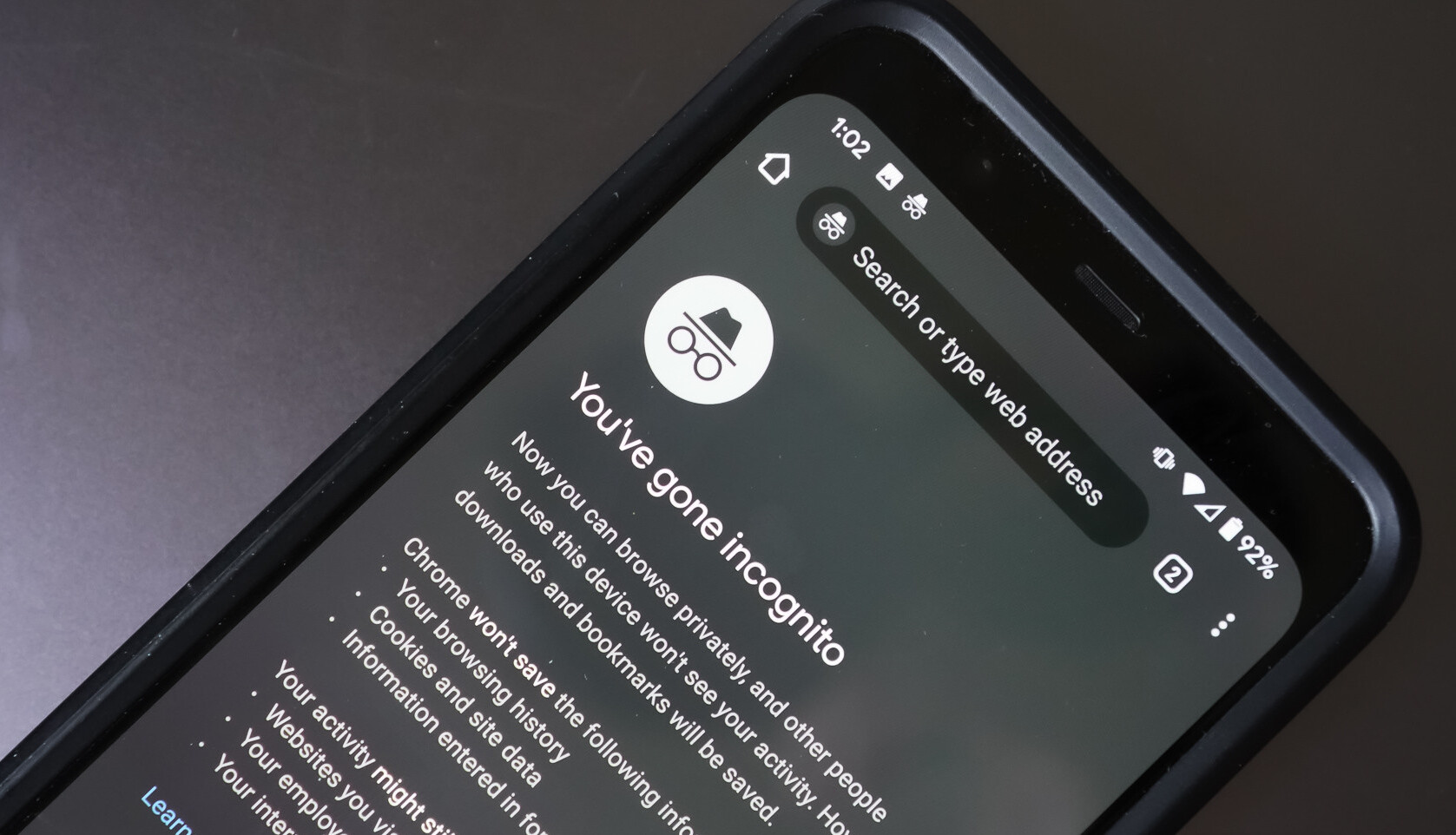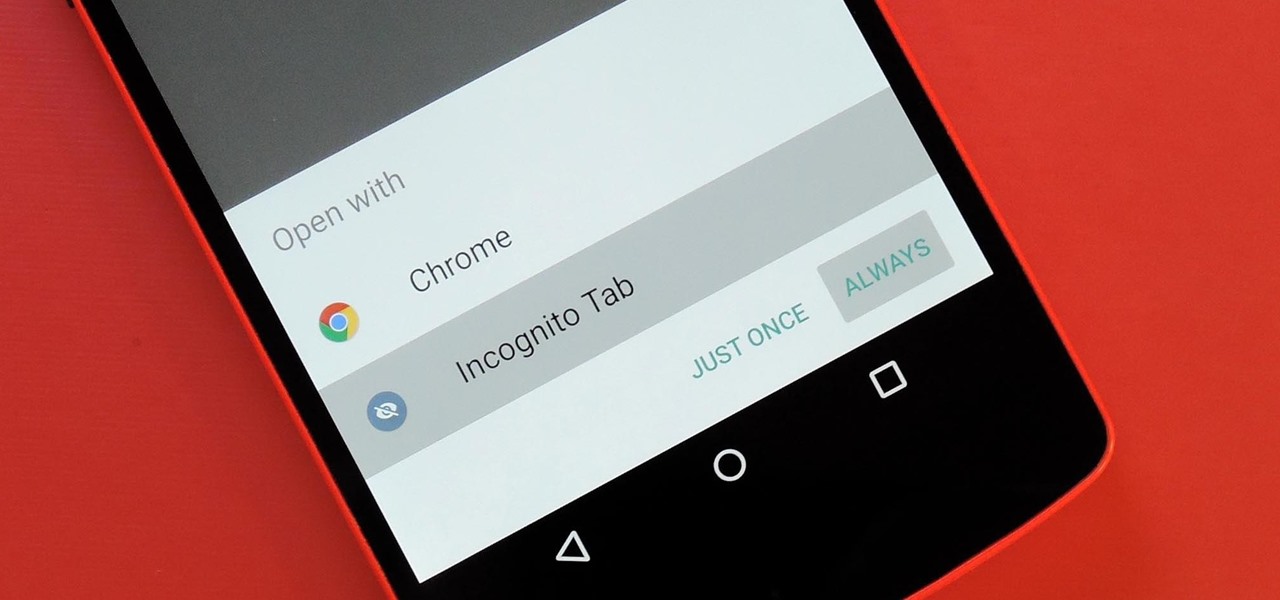Introduction
Welcome to the fascinating world of Incognito Mode on Android. This unique feature offered by the Chrome browser allows users to browse the internet privately, leaving no traces of their online activities. Incognito Mode can be a useful tool for maintaining privacy and confidentiality, but there may come a time when you want to disable it on your Android device. Whether it’s to access certain websites that block private browsing or to monitor the online activities of someone else, we’ve got you covered.
In this article, we will guide you through the steps on how to take off Incognito Mode on your Android device. We’ll explore both built-in and third-party solutions to give you the flexibility and control over your browsing preferences. So, grab your Android phone or tablet, and let’s get started!
Before diving into the steps, let’s take a moment to understand what Incognito Mode is all about. When you browse the internet in this mode, your browser will not save any information such as your browsing history, cookies, or form data. This means that any websites you visit, files you download, or searches you perform will not be stored on your device. Additionally, your online activities will not be reflected in your browser’s history, and any temporary files created during the session will be automatically deleted when you exit Incognito Mode. It’s worth noting that while Incognito Mode provides a higher level of privacy, it does not make you completely anonymous online. Your internet service provider, network administrator, or the websites you visit can still track your activities.
Now that we have a clear understanding of Incognito Mode, let’s explore the methods to disable it on your Android device. Whether you want to disable it temporarily or permanently, we’ve got you covered with the following steps. Let’s dive in!
Step 1: Understanding Incognito Mode
Before we delve into disabling Incognito Mode, let’s take some time to understand its functionality and the benefits it offers. Incognito Mode, also known as private browsing, allows you to browse the internet without leaving any traces on your device.
When you enable Incognito Mode on your Android device, your browser, such as Chrome, will not save your browsing history, cookies, site data, or information you enter in online forms. It creates a separate browsing session where your online activities are isolated from your regular browsing session.
Here are a few key features and benefits of using Incognito Mode:
- Privacy: Incognito Mode helps protect your privacy by preventing your browsing history from being saved. This can be useful if you’re using a shared device or if you’re browsing sensitive or personal information.
- Temporary Sessions: When you close the Incognito Mode window, all your browsing data, including cookies and temporary files, are automatically deleted. This ensures that no traces of your online activities are left behind on the device.
- Bypassing Autofill: Incognito Mode also allows you to bypass autofill suggestions, preventing your browser from remembering information like usernames, passwords, and form entries.
- Avoiding Targeted Ads: By browsing in Incognito Mode, you can prevent websites from tracking your browsing behavior and serving you targeted advertisements based on your browsing history.
It’s important to note that while Incognito Mode provides privacy during your browsing session, it does not offer complete anonymity. Your internet service provider, network administrator, or websites you visit may still be able to track your activities. Additionally, any files downloaded or bookmarks created during an Incognito Mode session will remain on your device after you exit private browsing.
Now that you have a better understanding of Incognito Mode and its benefits, let’s move on to the next step to learn how to disable it on your Android device.
Step 2: Disabling Incognito Mode on Android
If you want to disable Incognito Mode on your Android device, there are a few methods you can try, depending on your device and browser. Follow the steps below to turn off private browsing:
Method 1: Using Chrome Settings
- Open the Chrome browser on your Android device.
- Tap on the three-dot menu icon located in the top-right corner of the screen.
- Select “Settings” from the drop-down menu.
- Scroll down and tap on “Privacy.”
- Within the Privacy settings, tap on “Disable Incognito Mode.”
- A warning message may appear informing you that browsing data will be saved. Tap on “OK” to proceed.
- Incognito Mode will now be disabled, and your future browsing sessions will no longer be private.
Method 2: Using App Restrictions
- Open the “Settings” app on your Android device.
- Scroll down and tap on “Apps & notifications” or “Applications.”
- Tap on the specific browser app you want to disable Incognito Mode for (e.g., Chrome).
- Select “Advanced” or “Advanced settings.”
- Look for the “Open by default” section and tap on “Open supported links” or “Open links.”
- Choose “Don’t open in this app” to disable Incognito Mode specifically for that browser app.
Method 3: Using Third-party Apps
If you’re unable to disable Incognito Mode using the built-in settings, you can try using third-party apps designed to restrict or block private browsing. These apps allow you to set up parental controls or restrictions on specific apps, including web browsers. Some popular options include “AppLock” and “Norton App Lock.”
Remember, disabling Incognito Mode using these methods may vary depending on your device model, Android version, and browser app. It’s always a good idea to check your device’s specific instructions or consult the browser’s support documentation for accurate guidance.
Now that you know how to disable Incognito Mode on your Android device let’s move on to the next step, where we’ll learn how to clear browsing data within the Chrome browser.
Step 3: Clearing Browsing Data on Android
In order to ensure the complete removal of your browsing history and any saved data, it’s recommended to clear your browsing data in addition to disabling Incognito Mode on your Android device. Follow the steps below to clear your browsing data in the Chrome browser:
- Open the Chrome browser on your Android device.
- Tap on the three-dot menu icon located in the top-right corner of the screen.
- Select “History” from the drop-down menu.
- Tap on the “Clear browsing data” button at the bottom of the screen.
- Choose the time range for which you want to clear your browsing data. If you want to clear all data, select “All time.”
- Check the types of data you want to delete, such as browsing history, cookies, cached images, and files.
- Tap on the “Clear data” button at the bottom of the screen.
- Wait for the browser to clear your data. This may take a few moments depending on the amount of data to be cleared.
By following these steps, you have successfully cleared your browsing data in the Chrome browser on your Android device. This will help ensure that your browsing history, cookies, and other website data are removed from your device.
Remember, clearing your browsing data is essential for maintaining your privacy, especially if you have previously used Incognito Mode to browse the internet. Regularly clearing your browsing data can also help improve the performance and speed of your browser.
Now that you’ve learned how to clear your browsing data, let’s move on to the next step, where we’ll explore how to reset Chrome settings on your Android device.
Step 4: Resetting Chrome Settings on Android
If disabling Incognito Mode and clearing your browsing data didn’t completely remove any traces of private browsing on your Android device, you can reset the Chrome settings to their default values. This will revert any changes made to the browser settings and ensure that all browsing data is erased. Follow the steps below to reset Chrome settings:
- Open the Chrome browser on your Android device.
- Tap on the three-dot menu icon located in the top-right corner of the screen.
- Select “Settings” from the drop-down menu.
- Scroll down and tap on “Advanced” or “Advanced settings.”
- Scroll down to the “Reset” section.
- Tap on “Reset settings” or “Reset.”
- A confirmation dialog will appear, informing you that your settings will be reset. Tap on “Reset” to proceed.
- Wait for the browser to reset the settings. This may take a moment.
- Once the process is complete, the Chrome browser will be restored to its original settings.
By resetting the Chrome settings, you ensure that any traces of private browsing, including Incognito Mode, are completely removed from your Android device. It’s important to note that resetting your Chrome settings will also remove any saved passwords, bookmarks, and other personalized data. Therefore, make sure to backup any important data before proceeding with the reset.
Now that you’ve learned how to reset Chrome settings on your Android device, let’s move on to the next step, where we’ll explore using third-party apps to disable Incognito Mode.
Step 5: Using Third-party Apps to Disable Incognito Mode on Android
If the built-in options to disable Incognito Mode on your Android device are not available or not effective, you can turn to third-party apps to help you block or restrict private browsing. These apps provide additional control and allow you to set up restrictions or parental controls to prevent Incognito Mode usage. Here’s how you can use third-party apps to disable Incognito Mode:
- Go to the Google Play Store on your Android device.
- Search for “AppLock” or “Norton App Lock” using the search bar.
- Select the app from the search results that best meets your needs.
- Tap the “Install” button to download and install the app on your device.
- Once the app is installed, launch it from your app drawer.
- Follow the app’s instructions to set up a password or PIN to secure your apps.
- Within the app’s settings, locate the option to disable or restrict private browsing or Incognito Mode.
- Enable the option to block private browsing on your device.
These third-party apps work by adding an additional layer of security to your device. They allow you to set up a password or PIN to access specific apps, including web browsers. By configuring the settings within the app, you can effectively block or restrict any usage of private browsing modes like Incognito Mode.
It’s important to note that the specific steps and features of these third-party apps may vary depending on the app you choose. Some apps may offer more advanced features, such as time restrictions or advanced settings options, allowing you to customize your device’s browsing restrictions to your specific needs.
Now that you’ve learned how to use third-party apps to disable Incognito Mode on your Android device, let’s move on to the final step, where we’ll provide some tips on maintaining privacy and security on your Android device.
Step 6: Maintaining Privacy and Security on Android
While disabling Incognito Mode on your Android device can help protect your privacy, it’s important to take proactive steps to maintain overall privacy and security. Here are some tips to ensure your browsing activities and personal information remain secure:
- Use a Secure Browser: Consider using a secure browser that prioritizes privacy and has built-in features to block tracking and protect against malicious websites.
- Enable Secure Connections: Ensure that you browse websites over HTTPS whenever possible to encrypt your communications and protect against potential eavesdropping.
- Keep Your Device Updated: Regularly update your Android device’s operating system and all installed apps to stay protected against the latest security vulnerabilities.
- Be Wary of Public Wi-Fi: Avoid accessing sensitive information or performing financial transactions while connected to public Wi-Fi networks, as they can be prone to security risks.
- Use a Virtual Private Network (VPN): Consider using a reputable VPN service to encrypt your internet connection and protect your online activities from prying eyes.
- Be Mindful of App Permissions: Review the permissions requested by apps before granting them access to your device’s sensitive data. Only give permissions that are necessary for the app’s functionality.
- Use Strong, Unique Passwords: Always use strong and unique passwords for your online accounts to prevent unauthorized access. Consider using a password manager to manage and generate secure passwords.
- Regularly Clear Your Browsing Data: Make it a habit to clear your browsing history, cache, and cookies regularly to ensure that your browsing activities are not stored on your device.
- Install Antivirus Software: Protect your device from malware and other security threats by installing a reputable antivirus app and keeping it updated.
- Review App Permissions Regularly: Periodically review the permissions granted to installed apps on your device and revoke any unnecessary access.
By following these tips, you can enhance your privacy and security on your Android device. It’s essential to stay vigilant and proactive in protecting your personal information and maintaining control over your online activities.
Now that you have learned how to disable Incognito Mode, clear browsing data, utilize third-party apps, and maintain privacy and security on your Android device, you are well-equipped to take control of your online experience.
Remember, privacy is a continuous journey, and it’s important to stay informed about the latest security practices and adapt them accordingly. Follow these steps diligently, and enjoy a safer and more secure browsing experience on your Android device!
Conclusion
Congratulations! You have reached the end of our guide on how to take off Incognito Mode on Android. We hope that the steps and tips provided in this article have helped you disable private browsing and maintain your privacy and security on your Android device.
Throughout this guide, we covered various methods to disable Incognito Mode, including using Chrome settings, app restrictions, third-party apps, and resetting Chrome settings. We also emphasized the importance of clearing browsing data and maintaining overall privacy and security on your device.
Remember, while disabling Incognito Mode can help protect your privacy, it is crucial to adopt additional measures to safeguard your online activities. Utilize secure browsers, enable secure connections, keep your device updated, and practice caution when using public Wi-Fi networks. These small but significant steps can go a long way in ensuring your online safety.
Lastly, always stay informed about the latest privacy practices and security measures. Regularly check for updates, review app permissions, and utilize antivirus software to keep your Android device protected against potential threats.
We hope that this guide has empowered you to take control of your privacy and security while using your Android device. By implementing the steps and tips provided, you can enjoy a safer and more secure browsing experience.
Thank you for choosing us as your guide, and happy browsing!







